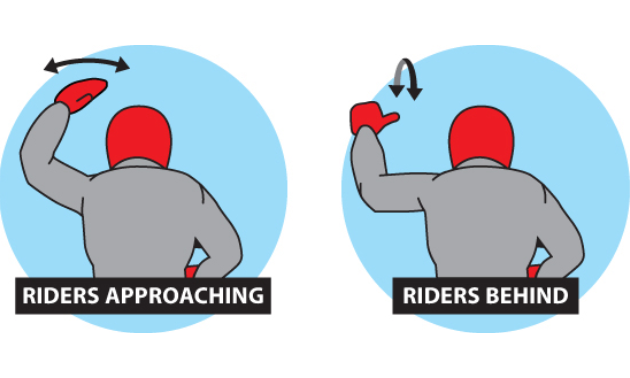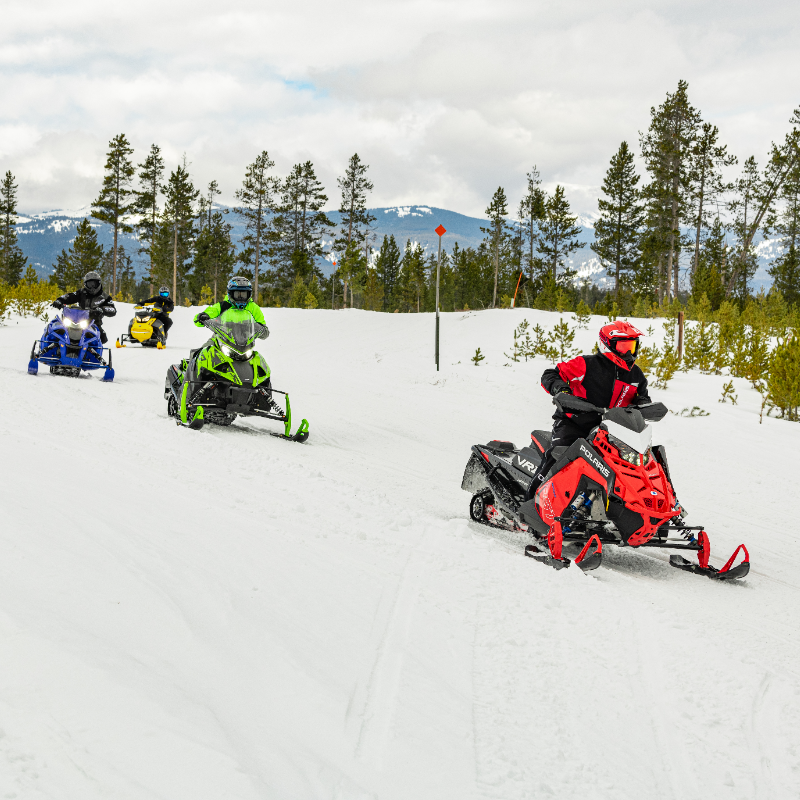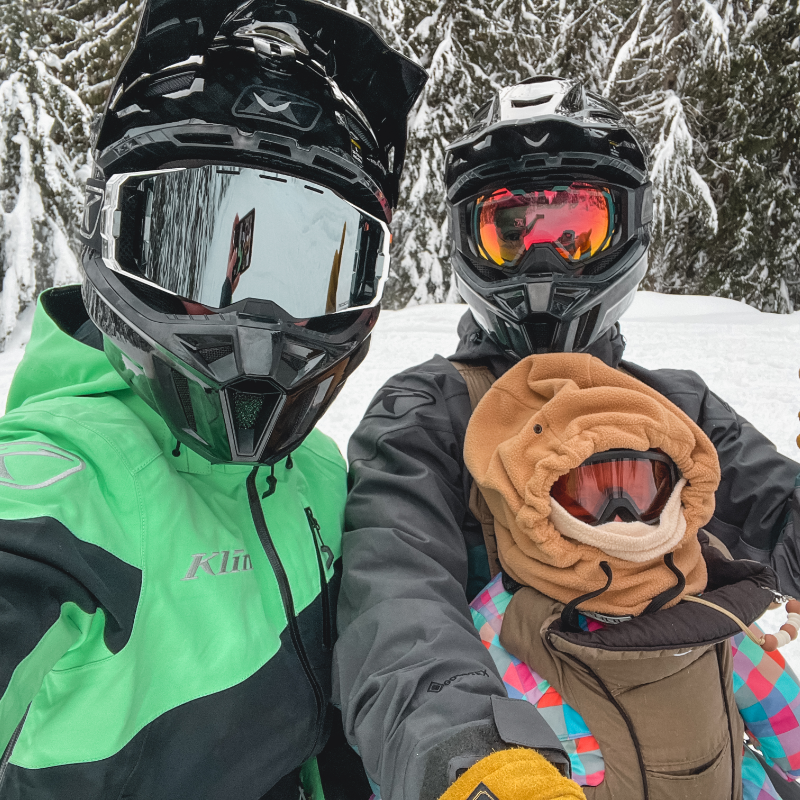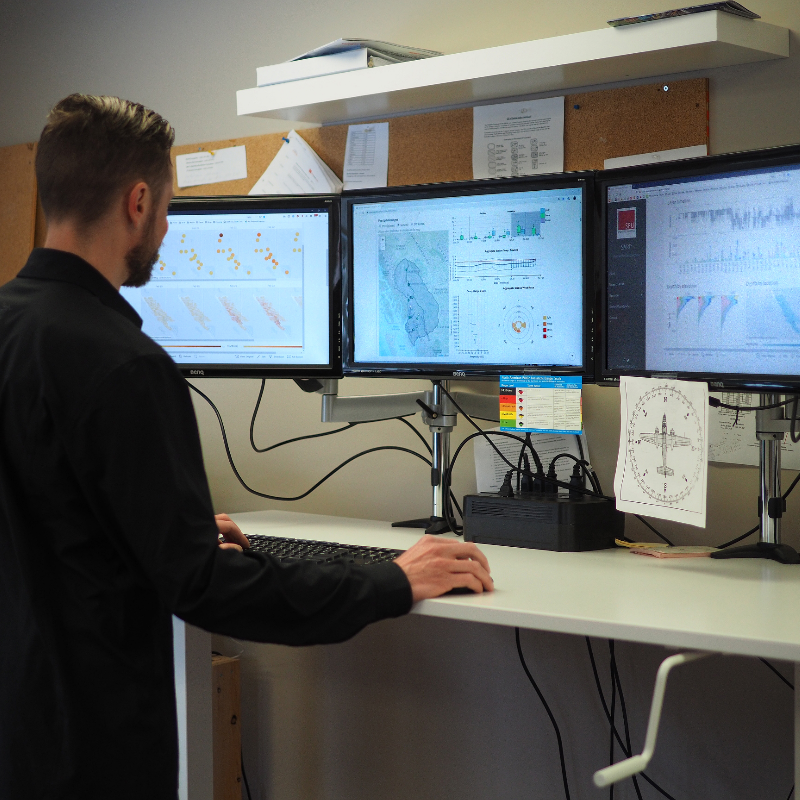Tactical teams, loading-dock hands and airport gate marshals all use hand signals for a reason––they need to communicate clearly, quickly and silently––lives depend on it. You and your sled crew should establish a set of hand signals, watch for them, use them and follow them––your life and the life of your fellow sledders depend on it.
Whether you’re grinding steep powder towards a mountain summit or pounding densely wooded trails, there are few things as exhilarating as a fist full of sled-throttle. Smart riders travel in groups, and hand signals are the best way to communicate urgent and critical information to your fellow riders.
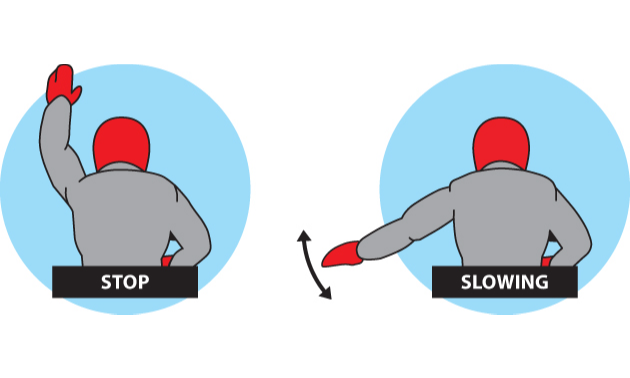
Stop and slow
Save the sledder following you the embarrassment of crunching the back of your sled by clearly signaling you are slowing or stopping. Indicate a hard stop by extending your left arm and fist straight up. Indicate slowing by extending your left arm to the side below horizontal and make like you are slapping the ground.
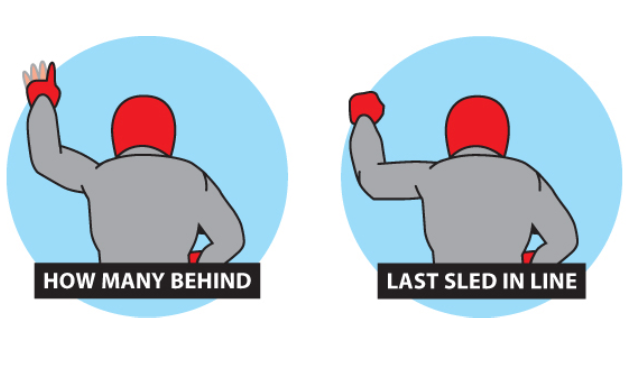
Other riders approaching
Letting the sledders behind you know what is ahead is as important as letting oncoming sledders know your crew is following. To let followers know there are sleds ahead, raise your left arm straight up and point your hand to the right and ahead to indicate there are on-coming sleds. This lets followers know they should move to the right of the trail.
Indicate to oncoming sledders there are sleds coming up behind you by raising your left hand and pointing over your shoulder with your thumb (assuming you have gloves on) and raise a finger for each sled coming up behind you. For more than five, “flash” your open hand to indicate more than five sleds following.
If you are the last sledder in the group, indicate so by extending a closed left-hand, fist down and off to the side behind you. This will indicate you are the last in the group.
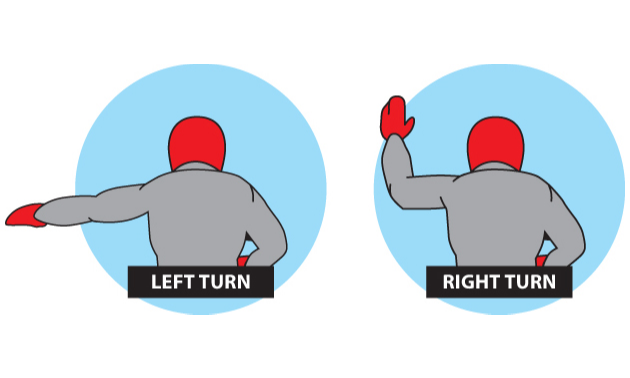
Right and left turns
The hand signals we learned as bike-riding kids still apply on the trail. Left-arm held horizontally directly away from the body indicates a left turn, and a right-angled left elbow with hand skyward indicates a right-hand turn.
Your fellow sledders may well land on a few additional gestures that suit your needs. Left-handed tight circles in the air for my sled crew means that was fun, let’s roll that one again. We have a few others covering things from bio-breaks to time for lunch, but you can figure those non-critical gestures out on your own.
In the meantime, lock down your ability to use and interpret these simple hand signals so your fellow sledders will have no need to ask, “Say what?”
